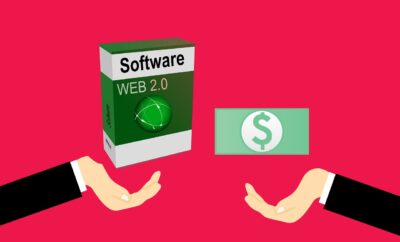An estimated 265.69 million consumers in the U.S. will shop online this 2023. By 2024, experts project it to grow further to 278.33 million.
So if you’ve always dreamed of owning an eCommerce business, then now may be the time to turn that into a reality.
However, operating an eCommerce business isn’t just about selling things from wherever. You must first ensure your chosen products are sellable in the first place. You must also factor in your competitors and how to outshine them.
To that end, we created this guide to the top eCommerce business tips you should be aware of. So keep reading, as you can use what you learn here during the development process of your online store.
1. Deciding Which Profitable Products to Sell
A profitable product satisfies one of three things, one of which is meeting a customer’s need. The second is that it solves a problem, while the third is that it serves a passion.
A good determiner of which products fit the bill is their popularity as online search terms. This is where Google Trends come into play; it analyzes how popular Google Search queries are. It also uses graphs to compare each query’s search volume over time.
You can also check product listings on other eCommerce sites such as Amazon, eBay, and Etsy. Use these as guides to determine their best-selling products. List those that interest you, your target market, family, friends, and coworkers.
2. Researching Your Competitors
Once you’ve decided on your products, the next step is to identify your direct competitors.
Direct competitors are other eCommerce businesses providing the products you want to sell. They also target the same geographic and demographic market as yours. Lastly, they sell their products at a price point similar to what you have in mind.
One of the simplest ways to identify direct competition is to search for a product you want to sell online.
First, turn on your browser’s location services for accurate results. Then, search for a product (e.g., reusable water bottles, pet treats, air fryers, etc.) + the phrase “for sale.”
The search results should reveal which online stores cater to your target market. You can then check out the top contenders to find out what their customers say about them. Pay particular attention to what their clients like and hate about them.
You can then use all that information to build a business that outshines the competition.
Suppose your competitors’ customers rave about their products but complain about shipping. So, take note of those items, their features, strengths, weaknesses, and price. Then, consider selling the same but choose a more reliable courier service.
3. Using Dropshipping as Your Fulfillment Method
Dropshipping is a retail fulfillment method with an estimated worth of $162.5 billion in 2021. It’s so popular that come 2028; experts project its value to grow to $621.41 billion.
Europe fulfillment service benefits eCommerce business operations by reducing overhead costs. For starters, it eliminates the need for eCommerce businesses to stock their products. As a result, they don’t have to keep their items in storage or warehouses, either.
For the same reason, eCommerce business owners can cut shipping and logistics costs. That’s because the products they sell come from a third party that ships them straight to the buyer.
4. Naming and Registering Your eCommerce Store
Creating an eCommerce website requires choosing its domain name and registering it first.
Your eCommerce site’s domain name is its web address or URL, so it must be memorable and easy to spell and type. It can be your brand name or something related to it.
Once you’ve chosen your domain name, register it with a registrar, which can also be a web host. These include GoDaddy.com, Bluehost.com, and HostGator.com, to name a few. Domain.com is also a registrar providing registration services without the hosting part.
5. Building Your Store With an eCommerce Platform
After registering your domain, the next step is to choose an eCommerce platform.
One of your options is a dedicated eCommerce platform like Shopify or BigCommerce. These paid services offer robust features such as shipping labels and secure payments. They also have beautiful templates and non-coded store-building tools.
There are also some general website builders offering eCommerce functionality. These include Squarespace, Weebly, and Wix.
6. Opening an Online Business Merchant Account
A merchant account lets you process debit or credit card payments. It can either be a low-risk or a high-risk merchant account.
A low-risk merchant account is for businesses accepting payments in a single currency. For instance, if you’re in the U.S., this account will only let you process payments in U.S. dollars.
A low-risk account also has lower monthly payment limits, usually $20,000 or less.
On the other hand, high-risk merchant accounts are for businesses deemed high-risk. This classification can be due to the industry, for example, tobacco or alcohol sales. Another is if the merchant has a history or high potential of chargebacks.
eCommerce businesses often classify as high-risk because of their elevated chargeback risks. Thus, you may be better off opening high-risk merchant accounts. Besides, these services also let you accept payments from anywhere, including other currencies.
7. Choosing Your eCommerce Business Marketing Strategies
Once you’ve completed the steps above, it’s time to market your eCommerce store.
Consider low-cost strategies first, such as search engine optimization (SEO). You don’t have to pay for SEO, but it’s not free, as optimizing your site requires time, and time is money. For example, you must publish relevant and authoritative content about your store online.
Another low-cost marketing method is to promote your business on social media. Facebook remains your best bet, with about 2.9 billion monthly active users (MAUs). YouTube (2.56 billion MAUs) and Instagram (1.47 billion MAUs) are other excellent platforms.
After promoting awareness using those channels, consider adding paid ones. These include paid digital ads, pay-per-click services, and email marketing campaigns.
Plan Your eCommerce Business Today
Remember: The success of an eCommerce business depends on a profitable product. This item, in turn, must meet a need, solve a problem, or serve a passion. If it doesn’t, it can make the business flop.
So, spend as much time on product and competitor research as soon as possible. The sooner you do, the sooner you can decide what to sell and, from there, start building your online store.
For more exciting and informative reads like this, check out our most recent news and blog posts!










